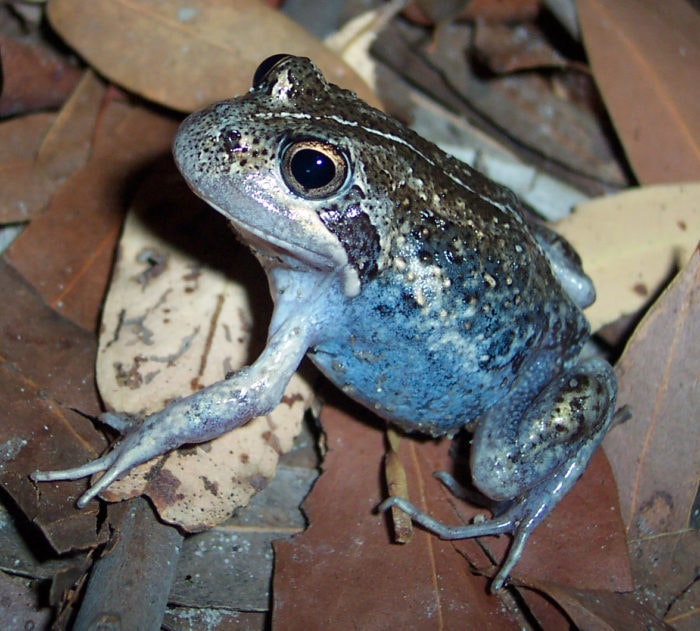The pobblebonk frog makes the best noises

Bec Crew
Bec Crew

THIS AUSTRALIAN native is as cute as a button, and the little noises it makes are a national treasure, like chocolate bilbies and pavlova (??).
Found in eastern Australia, these large, warty frogs are the burrowing kind, digging themselves underground during the hot, dry season, and only emerging for the rain, when the females will spawn en masse, laying up to 4,000 eggs each in one go.
Not content with just laying their eggs and hoping for the best, these pobblebonk mums use their forearms like egg beaters to whip up a foam from the clear jelly surrounding them. This gently cradles the eggs on the surface of a creek, or sticks them to vegetation, hopefully away from hungry mouths.
The females will also use the large skin flaps on her fingers to carry air bubbles from the surface of the water into the foam nest to keep their eggs healthy and oxygenated.
The pobblebonk frog really takes to its surroundings, and has evolved into five different subspecies with distinct ranges and habitats.
There’s the eastern banjo frog (Limnodynastes dumerilii dumerilii), which has the farthest range, stretching across NSW, northern Victoria, the Murray River and South Australia.
There’s the… other eastern banjo frog (Limnodynastes dumerilii grayi), which occurs along the coast of NSW and south to Jervis Bay. You can tell it apart from the other subspecies because of the patchy colouring across its back.
There’s the Snowy Mountains banjo frog, (Limnodynastes dumerilii fryi), which sounds like something a pixie would saddle up and ride, and it’s only found in one place on Earth: the Snowy Mountains (obvs).
And then there are the two southern banjo frogs, Limnodynastes dumerilii insularis and Limnodynastes dumerilii variegatus, the former ranging from south of Jervis Bay, along the south coast of NSW, to eastern Victoria and throughout Tasmania; and the latter is found in western Victoria and south-eastern South Australia.
Check out L. dumerilii insularis, with its weird blue colouring:

(Image credit: Tnarg 12345/Wikimedia)
But what you’re really here for is its goofy bonking call, right? Here’s one doing its best to find a mate:
And here’s an annoyed pobblebonk noise for good measure:
The pobblebonk’s close relative, the giant banjo frog (Limnodynastes interioris), also from south-eastern Australia is equally – if not more? – adorable. I mean, look at that face:
You can hear more of the pobblebonk here, where an ABC reader recorded a whole chorus of them.
Now that’s the sound of Australia, if ever there was one.

